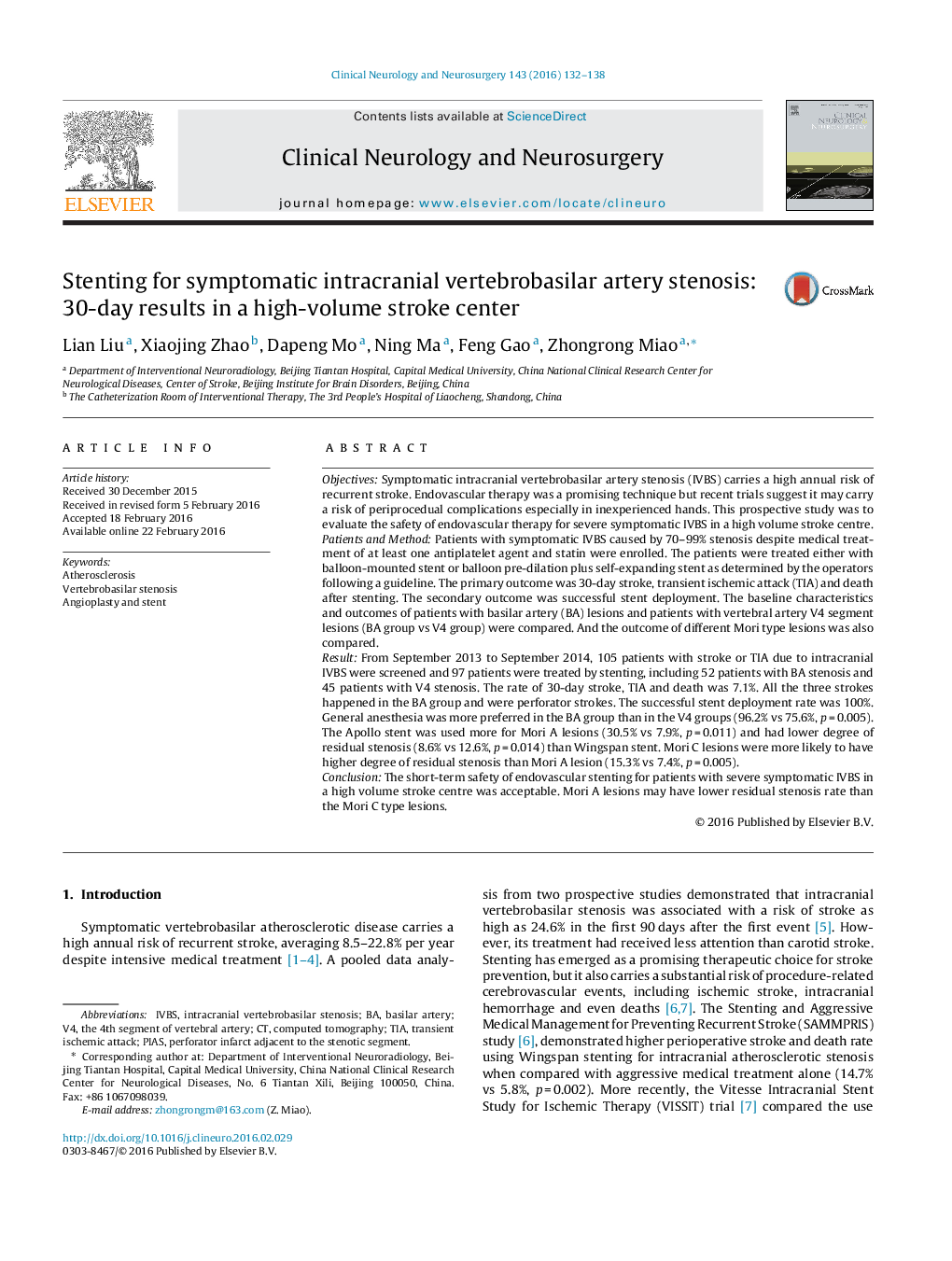| کد مقاله | کد نشریه | سال انتشار | مقاله انگلیسی | نسخه تمام متن |
|---|---|---|---|---|
| 3039648 | 1579679 | 2016 | 7 صفحه PDF | دانلود رایگان |
• A prospective study about the safety of stenting for IVBS in Chinese population.
• Two types of stents were used in the study according to the operators experience.
• The differences between the BA group and V4 group were summarized.
• The differences between the two types of stents were analyzed.
ObjectivesSymptomatic intracranial vertebrobasilar artery stenosis (IVBS) carries a high annual risk of recurrent stroke. Endovascular therapy was a promising technique but recent trials suggest it may carry a risk of periprocedual complications especially in inexperienced hands. This prospective study was to evaluate the safety of endovascular therapy for severe symptomatic IVBS in a high volume stroke centre.Patients and MethodPatients with symptomatic IVBS caused by 70–99% stenosis despite medical treatment of at least one antiplatelet agent and statin were enrolled. The patients were treated either with balloon-mounted stent or balloon pre-dilation plus self-expanding stent as determined by the operators following a guideline. The primary outcome was 30-day stroke, transient ischemic attack (TIA) and death after stenting. The secondary outcome was successful stent deployment. The baseline characteristics and outcomes of patients with basilar artery (BA) lesions and patients with vertebral artery V4 segment lesions (BA group vs V4 group) were compared. And the outcome of different Mori type lesions was also compared.ResultFrom September 2013 to September 2014, 105 patients with stroke or TIA due to intracranial IVBS were screened and 97 patients were treated by stenting, including 52 patients with BA stenosis and 45 patients with V4 stenosis. The rate of 30-day stroke, TIA and death was 7.1%. All the three strokes happened in the BA group and were perforator strokes. The successful stent deployment rate was 100%. General anesthesia was more preferred in the BA group than in the V4 groups (96.2% vs 75.6%, p = 0.005). The Apollo stent was used more for Mori A lesions (30.5% vs 7.9%, p = 0.011) and had lower degree of residual stenosis (8.6% vs 12.6%, p = 0.014) than Wingspan stent. Mori C lesions were more likely to have higher degree of residual stenosis than Mori A lesion (15.3% vs 7.4%, p = 0.005).ConclusionThe short-term safety of endovascular stenting for patients with severe symptomatic IVBS in a high volume stroke centre was acceptable. Mori A lesions may have lower residual stenosis rate than the Mori C type lesions.
Journal: Clinical Neurology and Neurosurgery - Volume 143, April 2016, Pages 132–138
